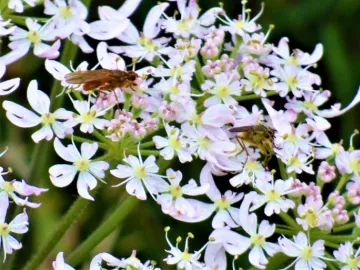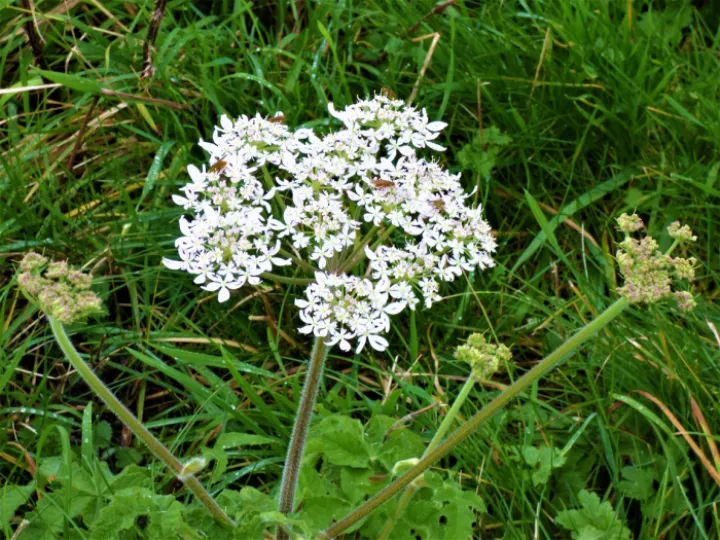







A Yatter about Yarrow
by Adrian Leighton
It's a bit difficult getting in the Christmas mood with the weather remaining so mild. The shelves of Christmas tat in the shops seem incongruous with people in shirtsleeves. Out and about this season confusion also has grabbed our wild partners. I did not expect to have to mow our lawn again at this time of year with the mower hibernating in the shed for the winter.
Yet even with the gloomy overcast skies, the natural world is still able to bring a smile to our faces. Such was the day yesterday as I took a walk along the canal. With much of the natural vegetation in spring preparation mode I came across a platoon of Yarrow plants in full flower. They had obviously caused some excitement for the insects still on the wing. For each flower head was entertaining a party of eager hoverflies. Yarrow can be seen in flower later in the year more often as single plants and often in a miniature version. These were full bloom plants defying the time of year.
It got me thinking about this plant which so often doesn't get a second look. It belongs to the Asteraceae family. Nature nerds will remember I have written about this family before. It includes the Dandelion and its look-alikes, the Thistles and Daisies. This varied family does have an enormous range of appearances. I would naturally have put Yarrow alongside the Umbellifers (Apiaceae), like the Spring flowering Cowparsley and also Hogweed and the toxic Hemlock.
The yarrow plant is found throughout the British Islands as well as being common throughout Europe, America and Asia.
It has a history stretching back 3000 years of medicinal use. Its formal scientific name is Achillea Millifolium, with the Millifolium bit referring to the many flowers on the flower head. The more interesting common names it goes by are Devil's Nettle, Old Man's Pepper, Nosebleed and Woundwort.
This last name gives a clue to long medicinal use. These days we now know it contains phenols, flavonoids, sesquiterpenoids and is used in the form of a supplement. Yarrow leaves, or juice made from its leaves, have historically been applied directly to wounds to aid healing (as the Romans also used Daisies). Applied to the skin it also acts as an inflammatory, and anti-oxidant. It is also being explored as a treatment in Cancer, Multiple Sclerosis ,IBS, and a number of other conditions . Of course, saying that it comes also with a health warning as use can have side-effects including nose bleeds if put up the nose!

The wild plant is usually found with a white flower head although it can be found with a dusty pink colour. It has been cultivated and grown decoratively in gardens with colours from white to deep pink.
As I found on my walk, insects of all kinds enjoy feeding on the flowers and lasting deep into Autumn provides a useful late feeding source.
Having been awakened to the hidden depths of this common plant, I know that I shall look at it with a bit more respect.
{There was an old man who would yatter,
About things he thought really matter.
His eyes spy a Yarrow,
And quickly they narrow;
Some call this old man the mad hatter.}
For more yatterings, why not buy my "Audlem Wildlife Diaries", on sale , at a special Christmas price, at the ADCA Christmas Craft Fair next Saturday in the Public Hall.
Adrian Leighton
Get In Touch
AudlemOnline is powered by our active community.
Please send us your news and views using the button below:
Email: editor@audlem.org





